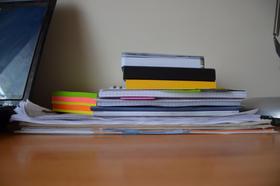Serving 256 students in grades Prekindergarten-5, Pine Villa Elementary School ranks in the bottom 50% of all schools in Florida for overall test scores (math proficiency is bottom 50%, and reading proficiency is bottom 50%).
The percentage of students achieving proficiency in math is 45-49% (which is lower than the Florida state average of 52%). The percentage of students achieving proficiency in reading/language arts is 25-29% (which is lower than the Florida state average of 52%).
The student-teacher ratio of 21:1 is higher than the Florida state level of 17:1.
Minority enrollment is 99% of the student body (majority Black), which is higher than the Florida state average of 65% (majority Hispanic and Black).
Quick Facts (2025-26)
- Grades: Prekindergarten-5
- Enrollment: 256 students
- Student-Teacher Ratio: 21:1
- Minority Enrollment: 99%
- Overall Testing Rank: Bottom 50% in FL
- Math Proficiency: 45-49% (Btm 50%)
- Reading Proficiency: 25-29% (Btm 50%)
- Science Proficiency: 21-39% (Btm 50%)
- Source: National Center for Education Statistics (NCES), FL Dept. of Education
Top Rankings
Pine Villa Elementary School ranks among the top 20% of public schools in Florida for:
Category
Attribute
Percent Eligible For Free Lunch
Community Size
School Overview
Pine Villa Elementary School's student population of 256 students has declined by 35% over five school years.
The teacher population of 12 teachers has declined by 33% over five school years.
Grades Offered
Grades Prekindergarten-5
(No virtual instruction)
(No virtual instruction)
Total Students
256 students
Gender %
Total Classroom Teachers
12 teachers
School Calendar
School Rankings
Pine Villa Elementary School ranks within the bottom 50% of all 3,662 schools in Florida (based off of combined math and reading proficiency testing data).
The diversity score of Pine Villa Elementary School is 0.32, which is less than the diversity score at state average of 0.70. The school's diversity has stayed relatively flat over five school years.
Overall Testing Rank
#2754 out of 3662 schools
(Bottom 50%)
(Bottom 50%)
Math Test Scores (% Proficient)
45-49%
52%
Reading/Language Arts Test Scores (% Proficient)
25-29%
52%
Science Test Scores (% Proficient)
21-39%
52%
Student-Teacher Ratio
21:1
17:1
American Indian
n/a
n/a
Asian
1%
3%
Hispanic
17%
37%
Black
81%
21%
White
1%
35%
Hawaiian
n/a
n/a
Two or more races
n/a
4%
All Ethnic Groups
Participates in the National School Lunch Program (NSLP)
Yes
Eligible for Free Lunch
81%
47%
Eligible for Reduced Lunch
1%
4%
School Statewide Testing
School District Name
Source: National Center for Education Statistics (NCES), FL Dept. of Education
Profile last updated: 02/09/2025
Frequently Asked Questions
What is Pine Villa Elementary School's ranking?
Pine Villa Elementary School is ranked #2754 out of 3,662 schools, which ranks it among the bottom 50% of public schools in Florida.
What percent of students have achieved state testing proficiency in math and reading?
45-49% of students have achieved math proficiency (compared to the 52% FL state average), while 25-29% of students have achieved reading proficiency (compared to the 52% FL state average).
How many students attend Pine Villa Elementary School?
256 students attend Pine Villa Elementary School.
What is the racial composition of the student body?
81% of Pine Villa Elementary School students are Black, 17% of students are Hispanic, 1% of students are Asian, and 1% of students are White.
What is the student-teacher ratio of Pine Villa Elementary School?
Pine Villa Elementary School has a student ration of 21:1, which is higher than the Florida state average of 17:1.
What grades does Pine Villa Elementary School offer ?
Pine Villa Elementary School offers enrollment in grades Prekindergarten-5 (No virtual instruction).
What school district is Pine Villa Elementary School part of?
Pine Villa Elementary School is part of Miami-Dade School District.
School Reviews
Review Pine Villa Elementary School. Reviews should be a few sentences in length. Please include any comments on:
- Quality of academic programs, teachers, and facilities
- Availability of music, art, sports and other extracurricular activities
Recent Articles

How Public Schools Handle Religious Holidays in 2025
Learn how public schools handle religious holidays in 2025, including policies, legal guidance, and real examples for families and educators.

Education Funding in America (2025 Update)
Comprehensive 2025 update on public school funding in America, new federal and state policies, per-pupil spending, and equity challenges.

School Supply Budget 2026: Fees, Books, Tech and Extras
Learn what families can expect from the School Supply Budget 2026, including fees, books, technology costs, and hidden extras impacting K12 budgets.









